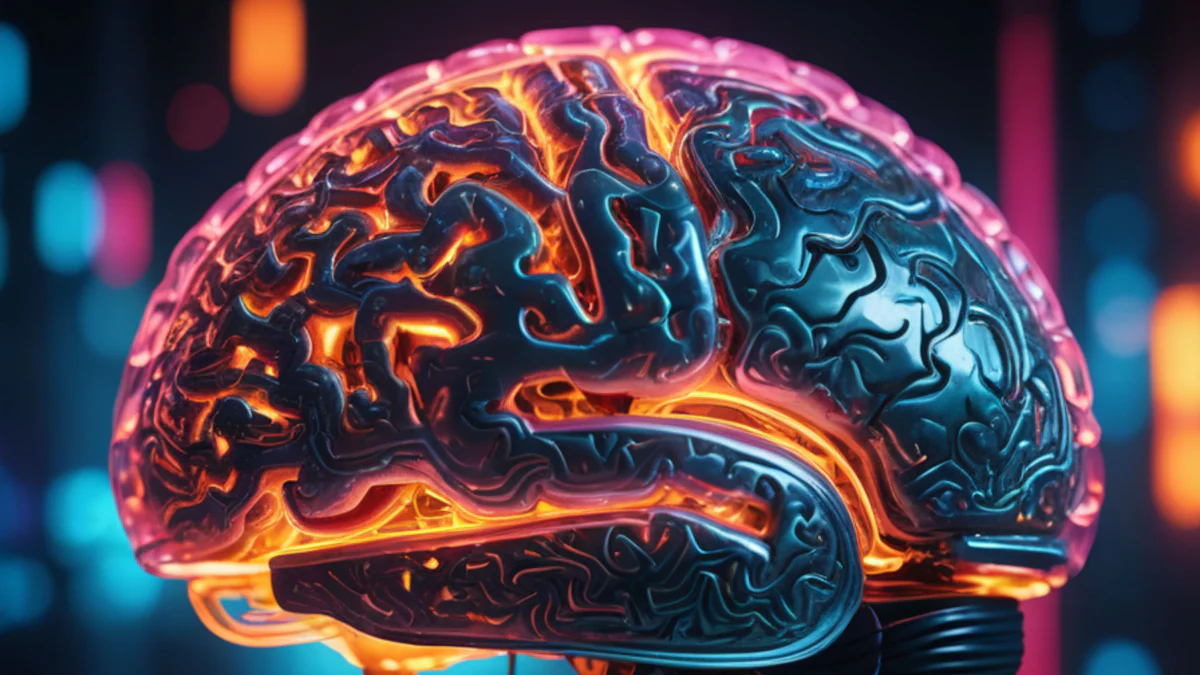Common Misconceptions About Generative AI Explained

Generative AI is transforming the way we interact with technology. You might have heard of tools like ChatGPT, which many people use daily. Yet, a surprising number of folks, between 19% and 30%, haven't even heard of these popular tools. Addressing misconceptions about Generative AI is crucial. It helps you understand its true potential and impact. Many believe AI will change industries like search, social media, and news media significantly. By clearing up misunderstandings, you can better appreciate how Generative AI can enhance your life and work.
Misconception 1: Generative AI is a New Technology
Generative AI might seem like a cutting-edge innovation, but it actually has roots that stretch back several decades. Let's dive into its fascinating history and current state to clear up this common misconception.
Historical Context
Early Developments in AI
Artificial intelligence has been around since the 1950s. Researchers began exploring AI methodologies to improve efficiency and optimize processes. In the 1960s, the first experiments with AI chatbots took place. These early chatbots attempted to hold human-like conversations, laying the groundwork for today's advanced models.
Evolution of Generative Models
Generative AI models have evolved significantly over the years. Initially, they were simple and limited in capability. However, as technology advanced, so did these models. The past decade has seen a rapid acceleration in AI-related invention applications. This evolution has led to the sophisticated generative models we see today, capable of creating art, writing, and even music.
Current State of Generative AI
Recent Advancements
Today, Generative AI is at the forefront of technological innovation. AI-driven technologies like ChatGPT and Dall-E have gained significant attention. These tools represent a new reality for workers and creatives alike. Recent advancements in machine learning have propelled Generative AI to new heights, allowing it to perform tasks that were once thought impossible.
Popular Applications
Generative AI is not just a tool for tech experts. Its applications span various fields, making it accessible to a wide range of users. In the creative industries, Generative AI assists artists and writers by providing new ideas and perspectives. In everyday life, it helps optimize logistics and supply chain processes. These popular applications demonstrate the versatility and potential of Generative AI.
Misconception 2: Generative AI Can Think Like Humans

You might think Generative AI can think like humans, but that's not quite right. Let's explore why this is a common misconception and what makes human cognition unique.
Understanding AI Limitations
Difference Between AI and Human Cognition
Generative AI can perform impressive tasks, but it doesn't truly "think" like you do. Jisoo Kim, an expert in AI and Human Cognition, points out that AI can quickly synthesize and analyze information. However, it lacks the intuitive understanding and emotional depth that define human creativity. Human cognition involves complex processes like empathy, critical thinking, and problem-solving. These are areas where AI still falls short.
"AI currently lacks the intangible qualities that define human creativity. It doesn't possess the intuitive understanding, emotional depth, and raw originality that fuel our capacity to create something truly novel." - AI and Human Creativity Expert
Role of Algorithms and Data
Generative AI relies on algorithms and data to function. It learns patterns from vast datasets and uses these patterns to generate content. Unlike humans, AI doesn't understand context or emotions. It can't grasp the nuances of a situation. Instead, it generates responses based on the data it has been trained on. This limitation means AI can't replicate the depth and complexity of human intelligence.
Examples of AI Limitations
Case Studies
Consider some real-world examples where Generative AI has shown its limitations. In creative fields, AI can assist by generating ideas or sorting through data. Yet, it can't replace the human touch. For instance, AI might help a writer brainstorm, but it can't capture the emotional depth of a personal story. Similarly, in art, AI can create images, but it lacks the cultural and emotional influences that drive human artists.
Expert Opinions
Experts agree that Generative AI complements human skills rather than replacing them. One expert notes:
"AI can't completely replace human expertise and creativity, and that's not really its purpose. Instead, we can think of Gen AI as a tool that complements our skills." - AI and Human Expertise Expert
This perspective highlights how Generative AI can enhance your work by handling repetitive tasks or sparking new ideas. It frees you to focus on tasks that require human insight and creativity.
Misconception 3: Generative AI is Always Accurate
You might think Generative AI always gets things right, but that's not the case. Let's explore why accuracy isn't guaranteed and what factors play a role.
Factors Affecting AI Accuracy
Data Quality
Data quality is crucial for Generative AI. If you feed it poor-quality data, it will likely produce inaccurate results. Imagine trying to bake a cake with spoiled ingredients. The outcome wouldn't be tasty, right? Similarly, AI relies on clean, well-organized data to function effectively. When data contains errors or biases, AI models can perpetuate these issues, leading to flawed outputs.
Model Training
Training plays a significant role in AI accuracy. You need to train AI models thoroughly to ensure they perform well. Inadequate training can result in models that don't generalize well to new situations. Think of it like practicing a sport. Without enough practice, you won't perform your best during a game. Similarly, AI models require extensive training to handle diverse scenarios accurately.
Real-World Examples of Inaccuracy
Notable Failures
Generative AI has had its share of notable failures. For instance, an AI chatbot once made false and defamatory statements, raising questions about liability when AI makes mistakes. Another case involved Generative AI providing factually inaccurate information, causing serious problems due to what experts call "AI hallucination." These incidents highlight the challenges of relying solely on AI for accurate information.
Lessons Learned
From these failures, you can learn valuable lessons. First, always verify AI-generated content, especially when accuracy is critical. Second, understand that AI can perpetuate biases if not carefully managed. An AI system might invent details based on patterns in its data, resulting in unverified and potentially deceptive outputs. By recognizing these limitations, you can use Generative AI more effectively and responsibly.
Misconception 4: Generative AI Will Replace Human Jobs
You might worry that Generative AI will take over your job, but that's not entirely true. Let's explore how AI is transforming the job landscape and what it means for you.
AI and Job Transformation
Automation vs. Augmentation
AI can automate repetitive tasks, freeing you to focus on more creative and strategic work. Instead of replacing you, AI often augments your capabilities. For example, AI can handle data entry, allowing you to spend more time on decision-making and problem-solving. This shift can lead to more fulfilling work experiences.
New Job Opportunities
AI creates new job opportunities as well. As AI technology advances, demand for skilled workers who can develop, manage, and maintain these systems increases. You might find roles in AI ethics, data analysis, or AI system management. These emerging fields offer exciting career paths for those willing to adapt and learn.
Industry Perspectives
Expert Insights
Experts believe AI will have a significant impact on the workforce. According to a survey, 62% of Americans think AI will majorly affect workers. However, many see this impact as positive. In the information and technology sectors, 32% of workers feel AI will help them more than hurt them. This optimism reflects the potential for AI to enhance your work rather than hinder it.
Economic Impacts
AI's influence extends to the economy as well. While some jobs may become obsolete, new industries and roles will emerge. The transition might be challenging, but it also presents opportunities for growth and innovation. By embracing AI, you can position yourself for success in a rapidly changing job market.
Misconception 5: Generative AI is Only for Tech Experts
You might think that generative AI is just for tech experts, but that's not true. Let's explore how accessible these tools have become and how you can use them in various fields.
Accessibility of AI Tools
User-Friendly Platforms
Generative AI isn't just for those with a tech background. Many platforms now cater to users like you, who might not have extensive coding experience. For instance, Pecan AI offers a low-code interface. It uses guided prompts to help you build predictive models easily. This means you can make data-driven decisions without needing to dive deep into complex coding.
Similarly, Dataiku provides a comprehensive AI analytics platform. It empowers both technical and non-technical users to build, deploy, and manage AI solutions. These platforms make it easier for you to harness the power of AI without feeling overwhelmed by technical jargon.
Educational Resources
You don't need to be a tech expert to learn about generative AI. Plenty of educational resources are available to help you get started. Online courses, tutorials, and workshops can guide you through the basics. They offer step-by-step instructions and practical examples. This way, you can gain confidence in using AI tools and apply them to your projects.
Examples of Non-Technical Applications
Creative Industries
Generative AI has found its way into creative industries, offering exciting possibilities. You can use AI to generate new ideas, whether you're an artist, writer, or musician. AI tools can assist you in creating unique artworks, composing music, or even writing stories. These applications show that AI can be a valuable partner in your creative process, sparking inspiration and innovation.
Everyday Use Cases
AI isn't just for professionals; it can enhance your everyday life too. You might use AI-powered apps to organize your schedule, manage your finances, or even plan meals. These tools simplify tasks and save you time, making your daily routine more efficient. By integrating AI into your life, you can enjoy the benefits of technology without needing to be a tech expert.
Misconception 6: Generative AI is Unethical
You might think generative AI is unethical, but that's not entirely true. Let's explore the ethical considerations and efforts to address these issues.
Ethical Considerations
Bias and Fairness
Generative AI can sometimes show bias. This happens when the data used to train AI models contains biases. You might wonder why this matters. Well, biased AI can lead to unfair outcomes. For example, if an AI system is trained on biased data, it might make decisions that favor one group over another. This is why fairness is crucial in AI development. Developers need to ensure that AI systems treat everyone equally.
Privacy Concerns
Privacy is another big concern with generative AI. You might worry about how your data is used. AI systems often require large amounts of data to function effectively. This raises questions about data privacy and security. You want to know that your personal information is safe and not misused. Developers must prioritize privacy by implementing strong data protection measures.
Efforts to Address Ethical Issues
Regulatory Frameworks
To address these ethical concerns, regulatory frameworks play a vital role. Governments and organizations are working to establish clear guidelines for AI usage. These frameworks aim to ensure responsible and ethical AI practices. They provide a foundation for addressing risks associated with generative AI. By following these guidelines, developers can create AI systems that respect ethical standards.
Industry Initiatives
The tech industry is also taking steps to address ethical issues. Many companies are launching initiatives to promote ethical AI development. They focus on creating transparent and accountable AI systems. These initiatives encourage collaboration among stakeholders to tackle ethical challenges. By working together, the industry can build trust and ensure that AI benefits everyone.
Misconception 7: Generative AI is a Passing Trend
You might think generative AI is just a fad, but it's here to stay. Let's explore its long-term potential and what experts predict for the future.
Long-Term Potential of AI
Ongoing Research and Development
Generative AI is not just a temporary buzzword. Researchers are constantly working to improve and expand its capabilities. AI's impact on the world and the global economy will be significant. It can automate tasks, increase productivity, and even improve healthcare. Imagine AI helping doctors diagnose diseases or recommend treatments. That's not science fiction; it's happening now. AI is also enhancing energy efficiency and transportation, making our lives easier and more sustainable.
Future Applications
The future of AI is bright and full of possibilities. In various industries, AI is already making waves. It's used in e-commerce to personalize your shopping experience and in entertainment to recommend shows you might like. In healthcare, AI is revolutionizing patient care by providing personalized treatment plans. These applications show that AI is not just a passing trend but a powerful tool that will continue to evolve and improve our lives.
Expert Predictions
Industry Forecasts
Experts believe AI will continue to grow and transform industries. They predict that AI will create new job opportunities and change how we work. AI is designed to mimic cognitive functions, which means it can handle complex tasks and make decisions. This capability will impact jobs, especially white-collar ones, but it will also open up new roles in AI ethics, data analysis, and system management. The key is to adapt and learn, so you can thrive in this new landscape.
Technological Innovations
AI is not just about replacing human jobs; it's about complementing human capabilities. It can quickly synthesize and analyze information, helping you make better decisions. AI acts as a collaborator, augmenting your skills and transforming the nature of work. This focus on optimization and innovation means AI will continue to be a driving force in technological advancements. As AI technology advances, you'll see more innovative applications that enhance your life and work.
In conclusion, generative AI is far from a passing trend. Its long-term potential and expert predictions show that it's a transformative technology with the power to change industries and improve our daily lives. Embrace AI, and you'll be ready for the exciting future it promises.
You've explored the common misconceptions about generative AI and gained clarity on its true potential. Understanding these myths helps you appreciate how AI can complement and augment human capabilities. By dispelling these myths, you unlock AI's potential to enhance your life and work.
"Approaching generative AI carefully is essential for its successful integration."
I encourage you to dive deeper into generative AI. Keep learning and engaging with this transformative technology. By doing so, you can harness its power responsibly and stay ahead in a rapidly evolving world.
See Also
Decoding Generative Artificial Intelligence: Functionality and Operation
The Unique Essence of Generative AI
Distinguishing Generative AI from Conventional AI
The Artistic Revolution Enabled by Generative AI
Evolution of Generative AI: Conceptualization to Actualization
